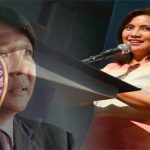“The late President Ferdinand Marcos cannot be buried at the “Libingan ng mga Bayani.” The law prohibits it.”
This is what lawyer, professor and broadcaster Mel Sta. Maria said in his opinion column at InterAksyon.com about the planned hero’s burial for the late dictator this September 18.
President Rodrigo Duterte gave the go signal for Marcos’ burial as a way of keeping his campaign promise.
Sta. Maria cited that Section 1 of Republic Act No. 289 does not allow the burial of Marcos at the hero’s cemetery.
“Section 1 of Republic Act No. 289, otherwise known as “An Act Providing for the Construction of a National Pantheon for Presidents of the Philippines, National Heroes and Patriots of the Country” is quite clear in its purpose – to ‘perpetuate the memory of all Presidents of the Philippines, national heroes and patriots for the inspiration and emulation of this generation and of generations still unborn.’”
He pointed out that the cemetery is meant only to be the final resting place for honorable men and women who are inspiring and worth emulating, something that Marcos wasn’t.
[ads1]
The lawyer also brought up how Republic Act No. 10368 acknowledged the horrors of the Marcos regime under Martial Law. He quoted this provision:
“… it is hereby declared the policy of the State to recognize the heroism and sacrifices of all Filipinos who were victims of summary execution, torture, enforced or involuntary disappearance and other gross human rights violations committed during the regime of former President Ferdinand E. Marcos covering the period from September 21, 1972 to February 25, 1986 and restore the victims’ honor and dignity. The State hereby acknowledges its moral and legal obligation to recognize and/or provide reparation to said victims and/or their families for the deaths, injuries, sufferings, deprivations and damages they suffered under the Marcos regime.
Similarly, it is the obligation of the State to acknowledge the sufferings and damages inflicted upon persons whose properties or businesses were forcibly taken over, sequestered or used, or those whose professions were damaged and/or impaired, or those whose freedom of movement was restricted, and/or such other victims of the violations of the Bill of Rights.”
The late President Corazon Aquino created the Presidential Commission on Good Government (PCGG) as her first executive order, Sta. Maria added. He said that the commission has recovered around P170 billion of the Marcoses’ ill-gotten wealth and is still trying to recover millions or billions more. He pointed this out as the dictator’s “memory” that should not be perpetuated, as provided for by RA 289, and could not be distinguished as a hero’s achievement.
Duterte kept raising the fact that Marcos was a soldier, earning him a spot at the hero’s cemetery, but Sta. Maria quashed it, saying that that National Historical Commission of the Philippines (NHCP) considers Marcos’ exploits and medals as a soldier as dubious.
The lawyer cited that burying a “dishonorable and corrupt president” cannot be within the noble intent of RA 289.
Sta. Maria added that this line, “shall be the burial place of their mortal remains” should not be taken as a command, since the Supreme Court has ruled that this should mean “permissive when no public benefit or private right requires that it be given an imperative meaning.” He explained that the Marcoses do not have a private right on the hero’s cemetery and the strongman’s burial at the sacred place does not have any public benefit.
And not all presidents were buried at the cemetery, like the late Presidents Manuel L. Quezon, Sergio Osmeña, Ramon Magsaysay and Manuel Roxas, he emphasized.
Sta. Maria said that pushing through with Marcos’ burial will “desecrate” the hero’s cemetery.
“To honor him, despite the recovery of billions of ill-gotten wealth (which is still on-going) and in spite of the unequivocal public-policy-recognition of the savagery of his regime against his own countrymen/women, is to render absurd Republic Act Number 289 and desecrate the ‘Libingan ng mga Bayani,’” he said.
For those who reasoned out that the burial would mean moving on from the darkest period in Philippine history, he said that while this might not undo what happened, refusing his burial means that the Filipinos refuse to be “subjected to the cruelty and greed of a despotic president.”
“And if erasing the memory of one of the darkest periods in our history after World War II is what the proponents of this burial is hoping to achieve, then the right thing to do is for them to acknowledge the atrocities that happened during the Martial-Law years. Then perhaps healing can start and some will finally have closure. No, they cannot just bury former President Ferdinand Marcos at the “Libingan ng mga Bayani” and hope that the memories of his oppressive regime would be buried with him,” Sta. Maria concluded.
Sources: ( interaksyon.com, chanrobles.com, gov.ph)
[ads3]


